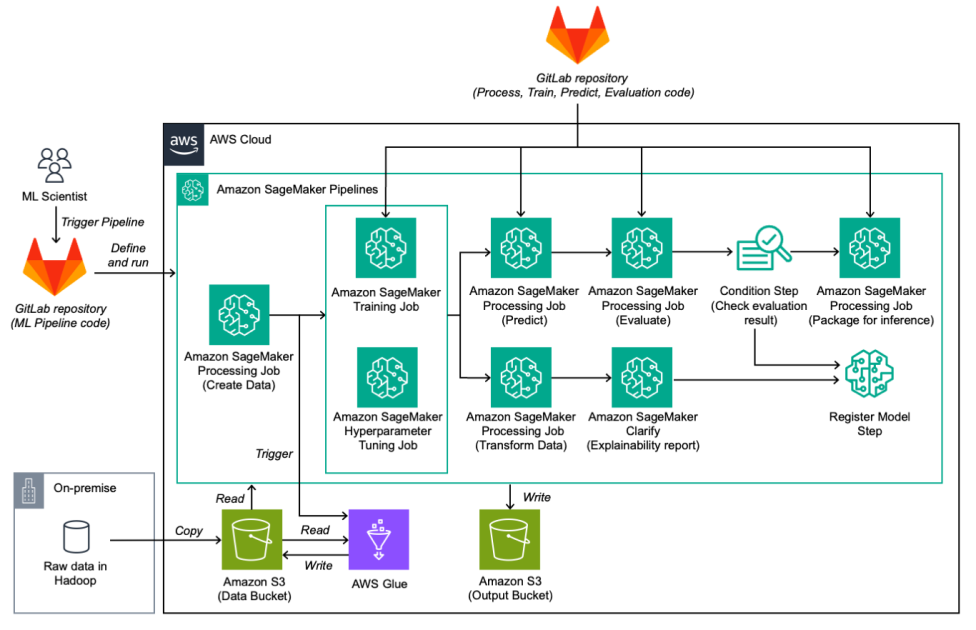
Generative AI applications driven by foundational models (FMs) are enabling organizations with significant business value in customer experience, productivity, process optimization, and innovations. However, adoption of these FMs involves addressing some key challenges, including quality output, data privacy, security, integration with organization data, cost, and skills to deliver. In this post, we explore different approaches you can take when building applications that use generative AI. With the rapid advancement of FMs, it’s an exciting time to harness their power, but also crucial to understand how to properly use them to achieve business outcomes. We provide an overview of key generative AI approaches, including prompt engineering, Retrieval Augmented Generation (RAG), and model customization. When applying these approaches, we discuss key considerations around potential hallucination, integration with enterprise data, output quality, and cost. By the end, you will have solid guidelines and a helpful flow chart for determining the best method to develop your own FM-powered applications, grounded in real-life examples. Whether creating a chatbot or summarization tool, you can shape powerful FMs to suit your needs. Generative AI with AWS The emergence of FMs is creating both opportunities and challenges for organizations looking to use these technologies. A key challenge is ensuring high-quality, coherent outputs that align with business needs, rather than hallucinations or false information. Organizations must also carefully manage data privacy and security risks that arise from processing proprietary data with FMs. The skills needed to properly integrate, customize, and validate FMs within existing systems and data are in short supply. Building large language models (LLMs) from scratch or customizing pre-trained models requires substantial compute resources, expert data scientists, and months of engineering work. The computational cost alone can easily run into the millions of dollars to train models with hundreds of billions of parameters on massive datasets using thousands of GPUs or TPUs. Beyond hardware, data cleaning and processing, model architecture design, hyperparameter tuning, and training pipeline development demand specialized machine learning (ML) skills. The end-to-end process is complex, time-consuming, and prohibitively expensive for most organizations without the requisite infrastructure and talent investment. Organizations that fail to adequately address these risks can face negative impacts to their brand reputation, customer trust, operations, and revenues. Amazon Bedrock is a fully managed service that offers a choice of high-performing foundation models (FMs) from leading AI companies like AI21 Labs, Anthropic, Cohere, Meta, Mistral AI, Stability AI, and Amazon via a single API. With the Amazon Bedrock serverless experience, you can get started quickly, privately customize FMs with your own data, and integrate and deploy them into your applications using AWS tools without having to manage any infrastructure. Amazon Bedrock is HIPAA eligible, and you can use Amazon Bedrock in compliance with the GDPR. With Amazon Bedrock, your content is not used to improve the base models and is not shared with third-party model providers. Your data in Amazon Bedrock is always encrypted in transit and at rest, and you can optionally encrypt resources using your own keys. You can use AWS PrivateLink with Amazon Bedrock to establish private connectivity between your FMs and your VPC without exposing your traffic to the internet. With Knowledge Bases for Amazon Bedrock, you can give FMs and agents contextual information from your company’s private data sources for RAG to deliver more relevant, accurate, and customized responses. You can privately customize FMs with your own data through a visual interface without writing any code. As a fully managed service, Amazon Bedrock offers a straightforward developer experience to work with a broad range of high-performing FMs. Launched in 2017, Amazon SageMaker is a fully managed service that makes it straightforward to build, train, and deploy ML models. More and more customers are building their own FMs using SageMaker, including Stability AI, AI21 Labs, Hugging Face, Perplexity AI, Hippocratic AI, LG AI Research, and Technology Innovation Institute. To help you get started quickly, Amazon SageMaker JumpStart offers an ML hub where you can explore, train, and deploy a wide selection of public FMs, such as Mistral models, LightOn models, RedPajama, Mosiac MPT-7B, FLAN-T5/UL2, GPT-J-6B/Neox-20B, and Bloom/BloomZ, using purpose-built SageMaker tools such as experiments and pipelines. Common generative AI approaches In this section, we discuss common approaches to implement effective generative AI solutions. We explore popular prompt engineering techniques that allow you to achieve more complex and interesting tasks with FMs. We also discuss how techniques like RAG and model customization can further enhance FMs’ capabilities and overcome challenges like limited data and computational constraints. With the right technique, you can build powerful and impactful generative AI solutions. Prompt engineering Prompt engineering is the practice of carefully designing prompts to efficiently tap into the capabilities of FMs. It involves the use of prompts, which are short pieces of text that guide the model to generate more accurate and relevant responses. With prompt engineering, you can improve the performance of FMs and make them more effective for a variety of applications. In this section, we explore techniques like zero-shot and few-shot prompting, which rapidly adapts FMs to new tasks with just a few examples, and chain-of-thought prompting, which breaks down complex reasoning into intermediate steps. These methods demonstrate how prompt engineering can make FMs more effective on complex tasks without requiring model retraining. Zero-shot prompting A zero-shot prompt technique requires FMs to generate an answer without providing any explicit examples of the desired behavior, relying solely on its pre-training. The following screenshot shows an example of a zero-shot prompt with the Anthropic Claude 2.1 model on the Amazon Bedrock console. In these instructions, we didn’t provide any examples. However, the model can understand the task and generate appropriate output. Zero-shot prompts are the most straightforward prompt technique to begin with when evaluating an FM for your use case. However, although FMs are remarkable with zero-shot prompts, it may not always yield accurate or desired results for more complex tasks. When zero-shot prompts fall short, it is recommended to provide a few examples in the prompt (few-shot prompts). Few-shot prompting The few-shot prompt technique allows FMs to do in-context learning from the examples in the prompts and perform the task more accurately. With just a few examples, you can rapidly adapt FMs to new tasks without large training sets and guide them towards the desired behavior. The following is an example of a few-shot prompt with the Cohere Command model on the Amazon Bedrock console. In the preceding example, the FM was able to identify entities from the input text (reviews) and extract the associated sentiments. Few-shot prompts are an effective way to tackle complex tasks by providing a few examples of input-output pairs. For straightforward tasks, you can give one example (1-shot), whereas for more difficult tasks, you should provide three (3-shot) to five (5-shot) examples. Min et al. (2022) published findings about in-context learning that can enhance the performance of the few-shot prompting technique. You can use few-shot prompting for a variety of tasks, such as sentiment analysis, entity recognition, question answering, translation, and code generation. Chain-of-thought prompting Despite its potential, few-shot prompting has limitations, especially when dealing with complex reasoning tasks (such as arithmetic or logical tasks). These tasks require breaking the problem down into steps and then solving it. Wei et al. (2022) introduced the chain-of-thought (CoT) prompting technique to solve complex reasoning problems through intermediate reasoning steps. You can combine CoT with few-shot prompting to improve results on complex tasks. The following is an example of a reasoning task using few-shot CoT prompting with the Anthropic Claude 2 model on the Amazon Bedrock console. Kojima et al. (2022) introduced an idea of zero-shot CoT by using FMs’ untapped zero-shot capabilities. Their research indicates that zero-shot CoT, using the same single-prompt template, significantly outperforms zero-shot FM performances on diverse benchmark reasoning tasks. You can use zero-shot CoT prompting for simple reasoning tasks by adding “Let’s think step by step” to the original prompt. ReAct CoT prompting can enhance FMs’ reasoning capabilities, but it still depends on the model’s internal knowledge and doesn’t consider any external knowledge base or environment to gather more information, which can lead to issues like hallucination. The ReAct (reasoning and acting) approach addresses this gap by extending CoT and allowing dynamic reasoning using an external environment (such as Wikipedia). Integration FMs have the ability to comprehend questions and provide answers using their pre-trained knowledge. However, they lack the capacity to respond to…









